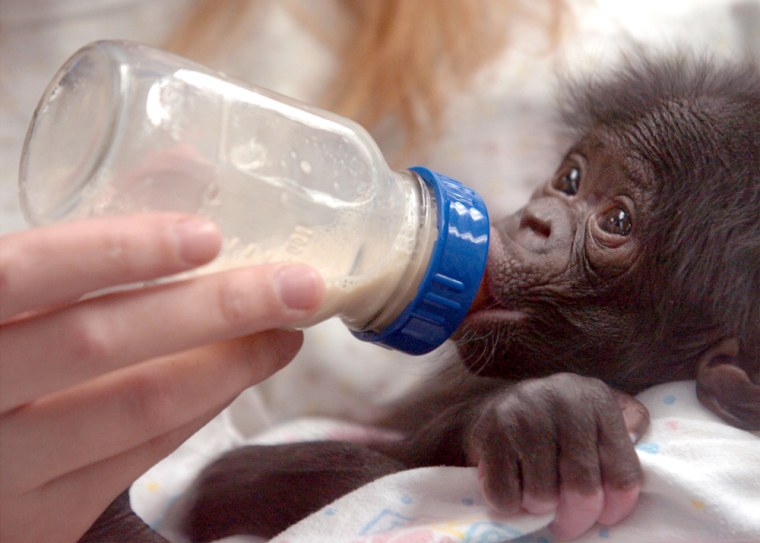Tiny genetic changes add up to huge differences when human DNA is compared to that of chimpanzees, researchers said Wednesday, in a report that explains how people and apes can be so close, yet so far apart.
Genetically, chimpanzees are 98.5 percent identical to humans. But the differences between the species are clearly profound, and geneticists have been laboring to find out how such subtle variations in DNA can be so important.
“Clearly, the genomic differences between humans and chimps are much more complicated than conventional wisdom has portrayed,” Asao Fujiyama of the RIKEN Genomic Sciences Center in Yokohama, Japan, and colleagues in Japan, Taiwan and China wrote in their report, published in Thursday's issue of the journal Nature.
The comparison will help understand disease and also help in comparing one person’s genetic sequence with another's by helping to set a “base” genetic sequence that can be used to determine the individual human variations in DNA.
Chromosome counterparts compared
Fujiyama’s team compared chromosome 22 on three different chimpanzees to its counterpart in humans, chromosome 21.
They looked for differences that would help separate the human sequence from the chimp sequence.
Fujiyama’s team found that just 1.44 percent of the DNA was different at the level of single letters of genetic code.
These letters, A, C, T and G, stand for the nucleotides that make up the DNA of all living creatures — adenine, cytosine, thymine and guanine. The nucleotides match up to make amino acids, which in turn string together into genes that control the proteins made by cells.
There are vast stretches of DNA that do not make up genes, and scientists are struggling to understand their importance.
Big protein differences
Fujiyama’s team found differences that may be more important than the single-letter changes.
“There is also an impressive number (68,000) of small to large stretches of DNA that have been either gained or lost (these are called ’insertions or deletions’, ’indels’ for short) in one species or the other,” the researchers wrote.
“These differences are sufficient to generate changes in most of the proteins: Indeed, 83 percent of the 231 coding sequences, including functionally important genes, show differences at the amino-acid sequence level,” they added.
“Our data suggest that indels within coding regions (genes) represent one of the major mechanisms generating protein diversity and shaping higher primate species.”
In other words, while the genes and other DNA may look the same in chimpanzees and humans, the proteins they eventually code for can be very different. This supports what genetic researchers have been saying lately — that subtle changes in the genetic code that reach far beyond the genes themselves may be extremely important to biology.
The power of proteins
While there may be no more than about 30,000 to 40,000 human genes, there are more than 250,000 different proteins.
The researchers tried to calculate what the genetic code of the original ancestor of both looked like, 6 million to 7 million years ago.
It looked to them as if the original ancestor of human chimps had a larger genome, and each species pared it down differently as they evolved.
Some of the genetic differences they found may have direct implications for disease. They found differences between chimp and human immune system genes, for instance, and molecules involved in early brain development.
